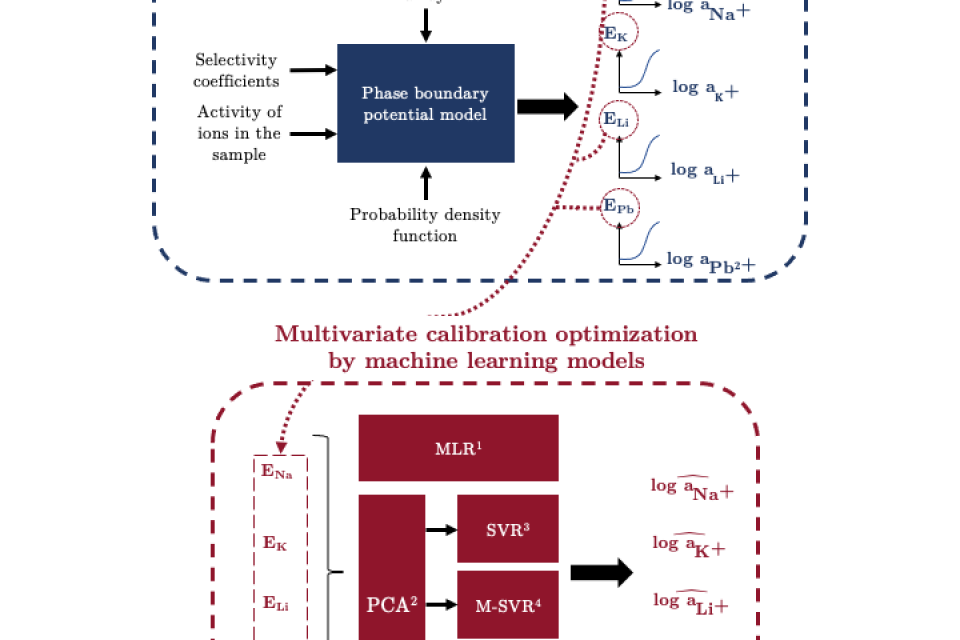Datasets
Standard Dataset
Multi-ion-sensing emulator
- Citation Author(s):
- Submitted by:
- Ivan Ny Hanitra
- Last updated:
- Tue, 05/17/2022 - 22:18
- DOI:
- 10.21227/gkwf-bq40
- Data Format:
- Research Article Link:
- License:
 160 Views
160 Views- Categories:
- Keywords:
Abstract
One paramount challenge in multi-ion-sensing arises from ion interference that degrades the accuracy of sensor calibration. Machine learning models are here proposed to optimize such multivariate calibration. However, the acquisition of big experimental data is time and resource consuming in practice, necessitating new paradigms and efficient models for these data-limited frameworks. Therefore, a novel approach is presented in this work, where a multi-ion-sensing emulator is designed to explain the response of an ion-sensing array in a mixed-ion environment. A case study is performed emulating the concurrent monitoring of sodium, potassium, lithium, and lead ions, in a medium representative of sweat samples. These analytes are relevant examples of sweat ion-sensing applications for physiology, therapeutic drug monitoring, and heavy metal contamination. Synthetic training datasets are generated following a factorial design of experiment in the range of interest of the considered ions in artificial sweat samples, while validation and test sets are generated following a random design of experiment with Weibull probability distribution function. Three datasets of scaled size are generated to assess the performance of the machine leaning models with scarse and large datasets.
Synthetic datasets generated by the multi-ion-sensing emulator proposed. The mixed-ion activity of the samples are obtained followin a factorial design of experiment for the training sets, while a random design of experiment is performed for the validation and test samples. The activity tables are fed to the multi-ion-sensing emulator to simulate the response of the ion-sensig array in the designed mixed-ion environment. The datasets size are the following (TRAINING/VALIDATION/TEST):
Dataset_1: 68/5x17/22
Dataset_2: 204/5x51/64
Dataset_3: 680/5x170/213






